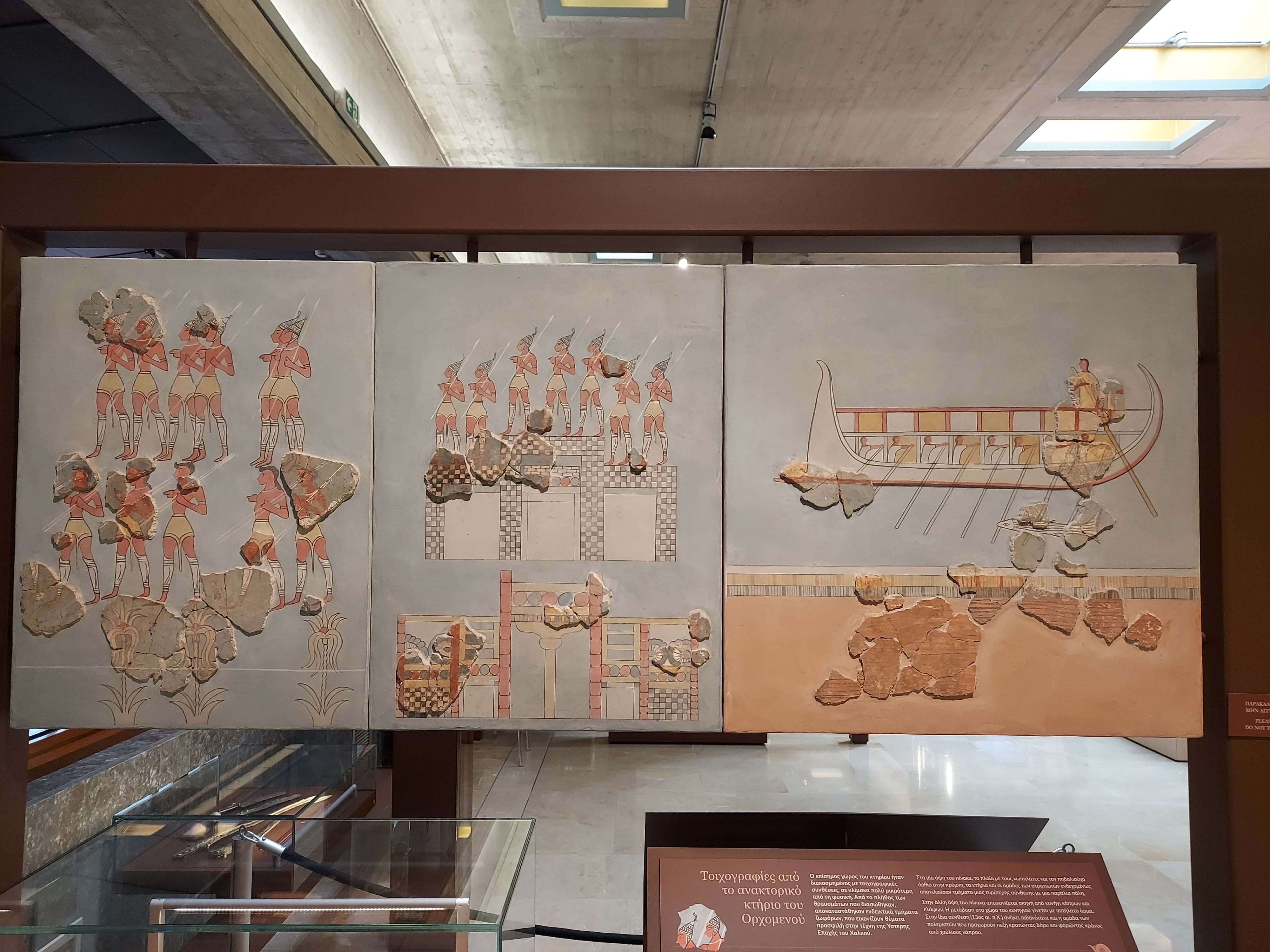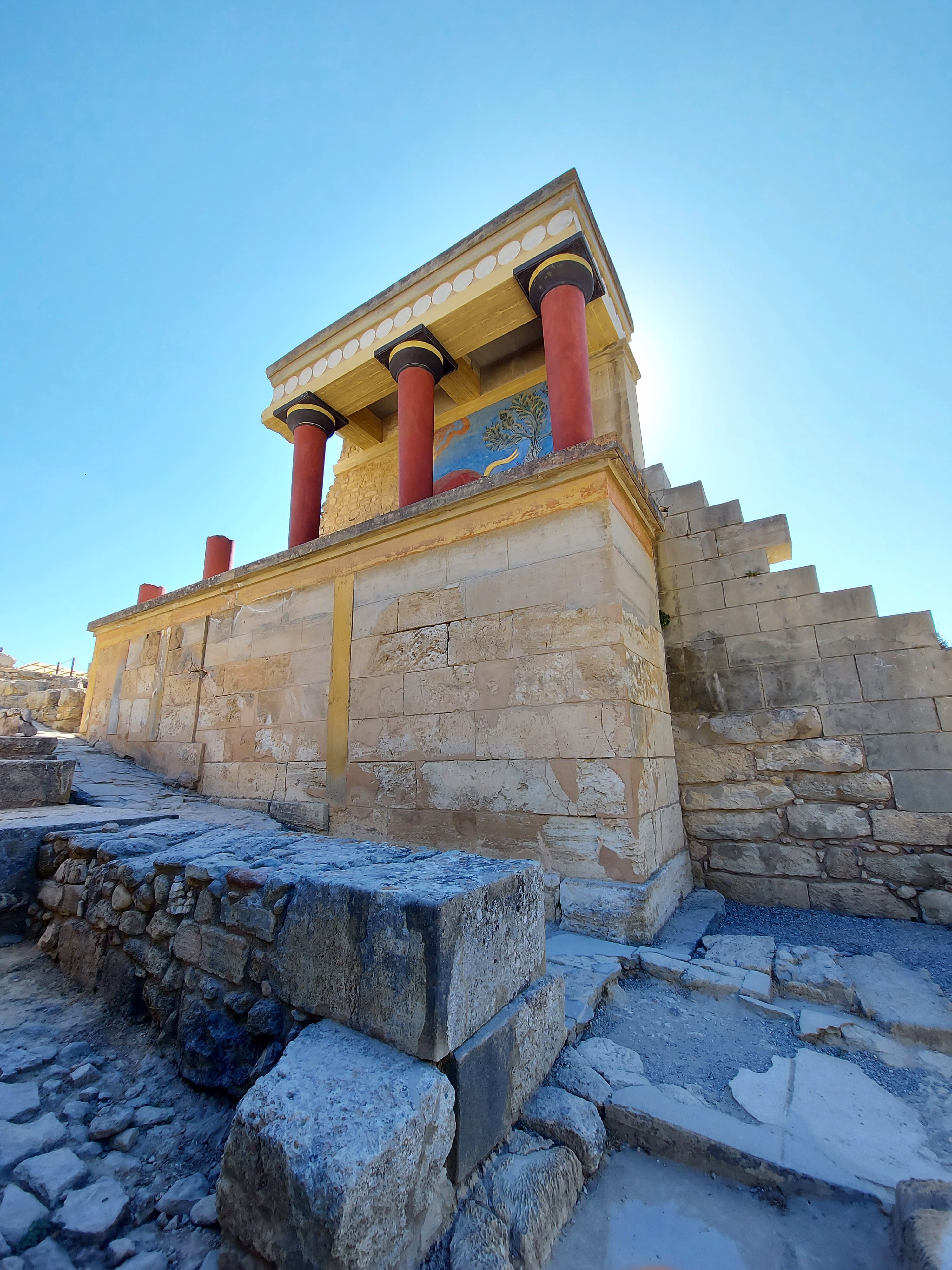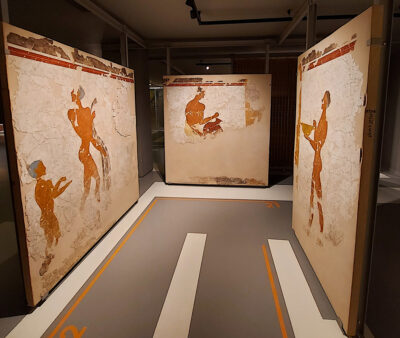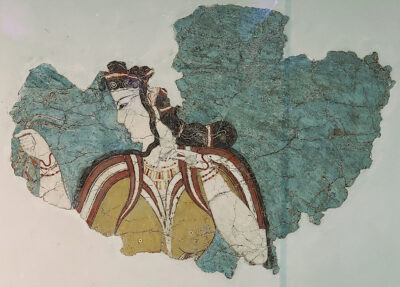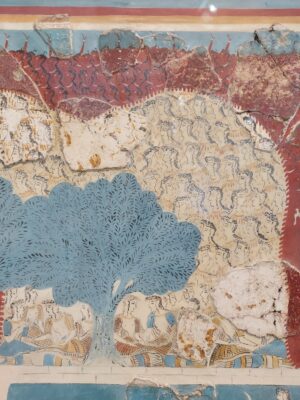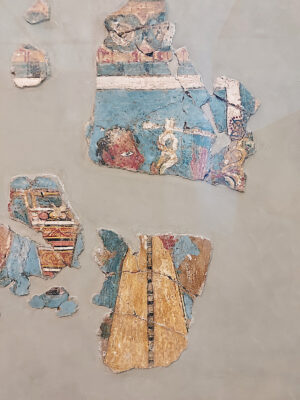Research goal
The research activity carried out under the Polish National Science Centre grant concerned the analysis of elements of Aegean visual culture of the Late Bronze Age, including how spatial relations are constructed in wall paintings and the visualisation and perception strategies involved. The contemporary understanding of space as an abstract, geometric value allows us to exist in the world in a certain way. It makes it possible, for example, to interpret the surrounding reality, including paintings from ancient eras on the basis of a container/ornate box (hypodoche) or an extent (to syneches). In pre-philosophical cultures, however, the world was perceived differently. One of the foundations of this difference is the way space was experienced and constructed. It simultaneously conditioned a system of classification of phenomena and things, perceptual and visualisation strategies, ways of seeing and moving in the environment and social behaviour. The project’s specific research questions and hypotheses aimed, among other things, to provide preliminary verification of the presence in Late Bronze Age Aegean culture of an advanced system of: (a) conception of space close to capacity (Platonic ὑποδοχή) or three-dimensional extension (Aristotelian χώρα); (b) a quasi-geometric perspective.
Project description
The planned research activity involved conducting research work at the American School of Classical Studies and the British School at Athens, including library searches, consultations with the ASCSA and BSA research teams, museum searches in Athens, the Peloponnese, Crete and Santorini, and visits to selected archaeological sites (Akrotiri, Sitia, Knossos, Phaistos, Mycenae, Tiryns, Pylos).
The research consisted of a theoretical and a practical part. During the first months of my stay in Athens, I tested the research hypotheses based on the literature available in ASCSA and BSA, followed by museum searches in Argolida, Messinia, Crete and Santorini. In the course of the scientific activity, among other things, I collected, classified and analysed iconographic material (Cycladic, Minoan, Mycenaean) indicating the limited use of advanced visualisation strategies based on the three-dimensional perception of space (imitation of depth). On the basis of surviving Aegean wall paintings and lexical data it was possible to reconstruct the elements of the imaginary space model of the time and the basic sensorimotor strategies. These consist of (a) relational perceptions of space; (b) performative and action-based production of space; (c) perceptions of space as a specific place, possibly a network or constellation of places bound together by acts of measurement; (d) immersive and simulative strategies; (e) experiments with rendering the impression of depth through graphic and chromatic means. The elements indicated allow for a reinterpretation of the preserved plastic art sources within the framework of a non-reductionist model, oriented towards a primary way of perceiving reality that is rooted in the culture of the period.

